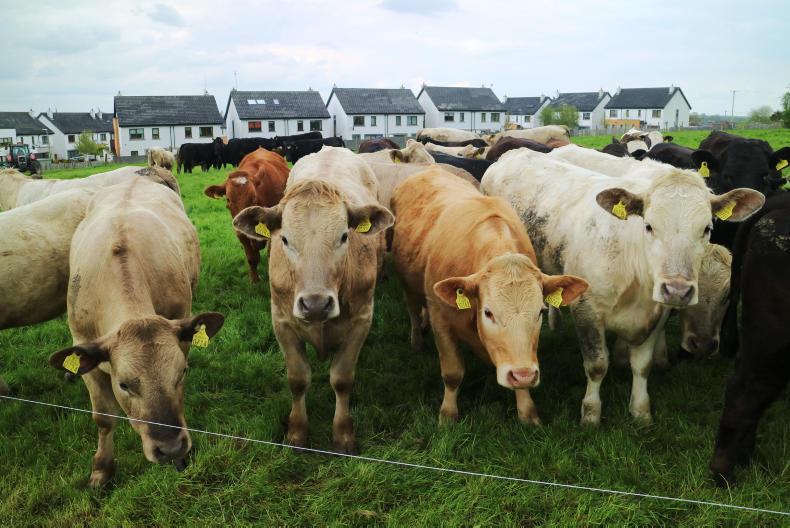The effects of this week’s heatwave, recent high temperatures and lower rainfall levels are starting to have significant consequences on management at Newford Farm. Grass supplies have diminished quickly this week on the Newford block, with a stocking rate of 4.27LU/ha and demand of 54kg DM/ha. Grass growth rates were recorded at 43kg DM/ha last week, but growth is estimated to have fallen to less than half this level this week.
The farm has no option but to take action and try and stretch out existing grass supplies. Farm manager Matthew Murphy explains that silage will be introduced on Monday and offered to the two batches of 50 cows and their calves. The silage offered is from surplus bales made in early May and Teagasc technician Michael Fagan estimates it will contain in the region of 200kg DM feed, or approximately 3-4kg/head for the 50-cow batches.
Offering cows this level of silage will reduce grass demand by 25%, but it is likely that when the grass cover is completed on Monday it will show negligible growth for this week and that this may need to be doubled to extend the grazing rotation to over 20 days. This will also be influenced by the weather forecast, which at present shows no rainfall until late into the week and even at that only miniscule levels are predicted.
Grass supplies are a little better in the Gort naHabhainn and Tuohy’s outfarm blocks, where demand is 42kg DM/ha. At present there is no need to introduce supplementation, but this will be reviewed at the start of next week.
Yearling performance
Yearling cattle were weighed on 19 June and steers and heifers recorded significant differences in performance. Steers gained 1.08kg from turnout on 19 April and recorded an average weight of 496kg. There is a high percentage of the 61 steers weighing in around this weight, with a small number rising to 550kg or slightly higher. Likewise, a small number are weighing back to 450kg and under. The liveweight of steers is similar to the corresponding 2017 weighing.
On average heifers weighed 434kg and achieved an average daily gain of 0.9kg since turnout. Unfortunately, this is 35-40kg behind the corresponding weight in 2017, with performance dipping in spring and failing to recover when heifers went to grass. Budgets will now be carried out to assess the effect of the lower liveweight on the target of finishing heifers off grass, with the added complication now being added into the mix of grass supplies tightening and ground closed for a second cut of silage stalling for the last two weeks.







 This is a subscriber-only article
This is a subscriber-only article











SHARING OPTIONS: